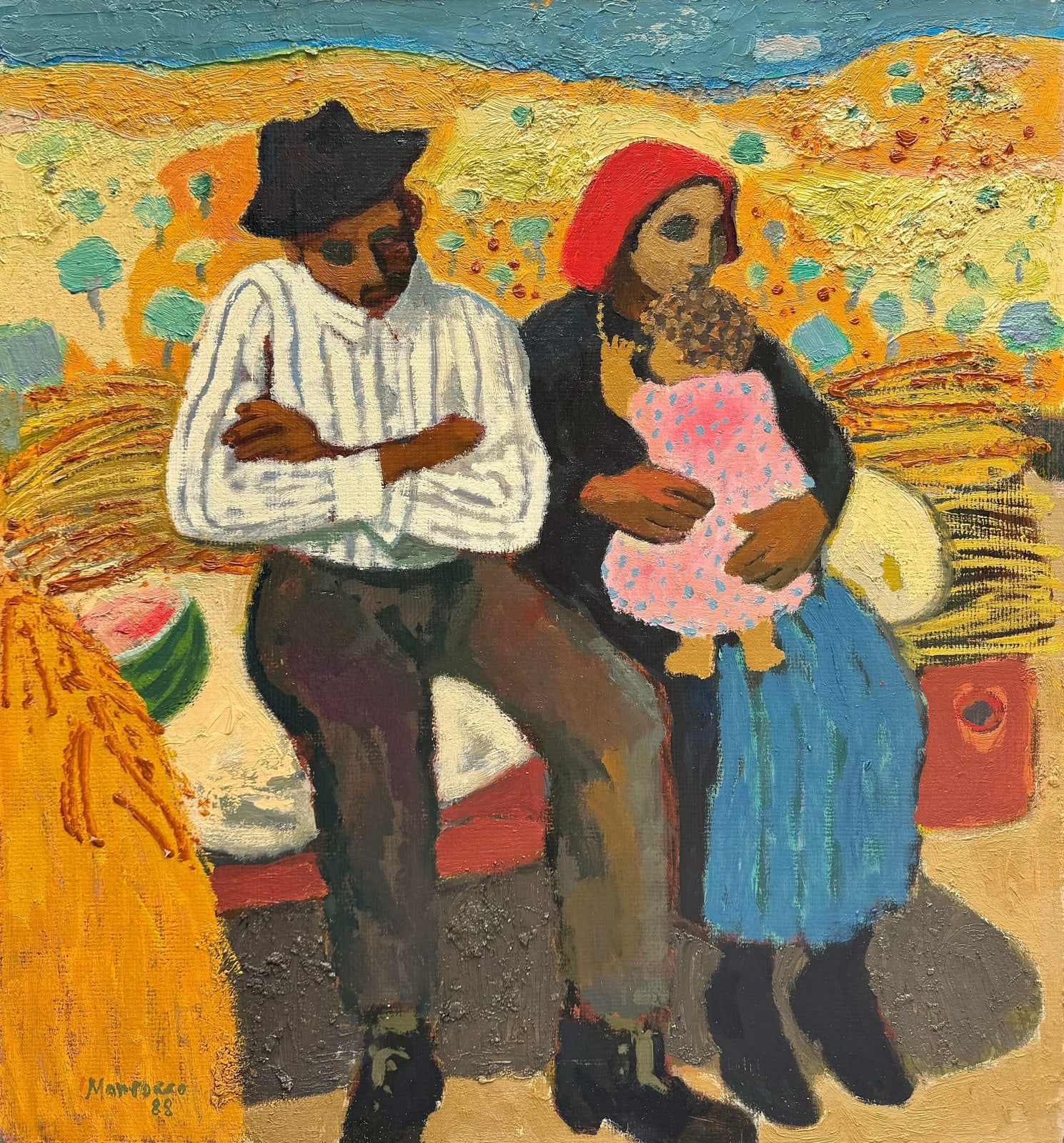Alberto Morrocco
Siesta in the Abruzzi, 1988
Oil on board
23 x 21 in
58.5 x 53.5 cm
58.5 x 53.5 cm
Signed & dated 'Morrocco/88' (lower left)
Sold
From empty landscapes and lively beach scenes to serene portraits and domestic interiors, Alberto Morrocco’s palette from the 1950s carry a wonderful warmth and vibrancy. During this time, Morrocco began...
From empty landscapes and lively beach scenes to serene portraits and domestic interiors, Alberto Morrocco’s palette from the 1950s carry a wonderful warmth and vibrancy. During this time, Morrocco began to travel around the Mediterranean with his family, revisiting his Italian roots and fully embracing the landscape and warmer climate.
Siesta in the Abruzzi, 1988 emulates the heat of Italy with rich impasto tones of yellow and gold which glow under a bright blue sky. Here, Morrocco shares a tender moment between a family, who rest peacefully on their cart amongst haybales, despite no respite from the sun’s direct heat. The vivid white shirt and red hat worn by the figures reflect the intense light directly towards the viewer. The handling of both colour and pattern across this oil, also demonstrates Morrocco’s Inspiration from Post-Impressionists Eduard Vuillard and Eugene Bonnard where a boldness of these elements amongst often tender domestic scenes was at the forefront of these artists’ practice. A segment of watermelon can also be seen next to the male figure, which was a frequently used motif by Morrocco in both his still life and figurative scenes over this period. His son, artist Leon Morrocco also fondly replicated this in his painting.
Siesta in the Abruzzi, 1988 emulates the heat of Italy with rich impasto tones of yellow and gold which glow under a bright blue sky. Here, Morrocco shares a tender moment between a family, who rest peacefully on their cart amongst haybales, despite no respite from the sun’s direct heat. The vivid white shirt and red hat worn by the figures reflect the intense light directly towards the viewer. The handling of both colour and pattern across this oil, also demonstrates Morrocco’s Inspiration from Post-Impressionists Eduard Vuillard and Eugene Bonnard where a boldness of these elements amongst often tender domestic scenes was at the forefront of these artists’ practice. A segment of watermelon can also be seen next to the male figure, which was a frequently used motif by Morrocco in both his still life and figurative scenes over this period. His son, artist Leon Morrocco also fondly replicated this in his painting.
Provenance
Thackeray Gallery, LondonPrivate collection, London, acquired from the above, October 1988 and by descent.
